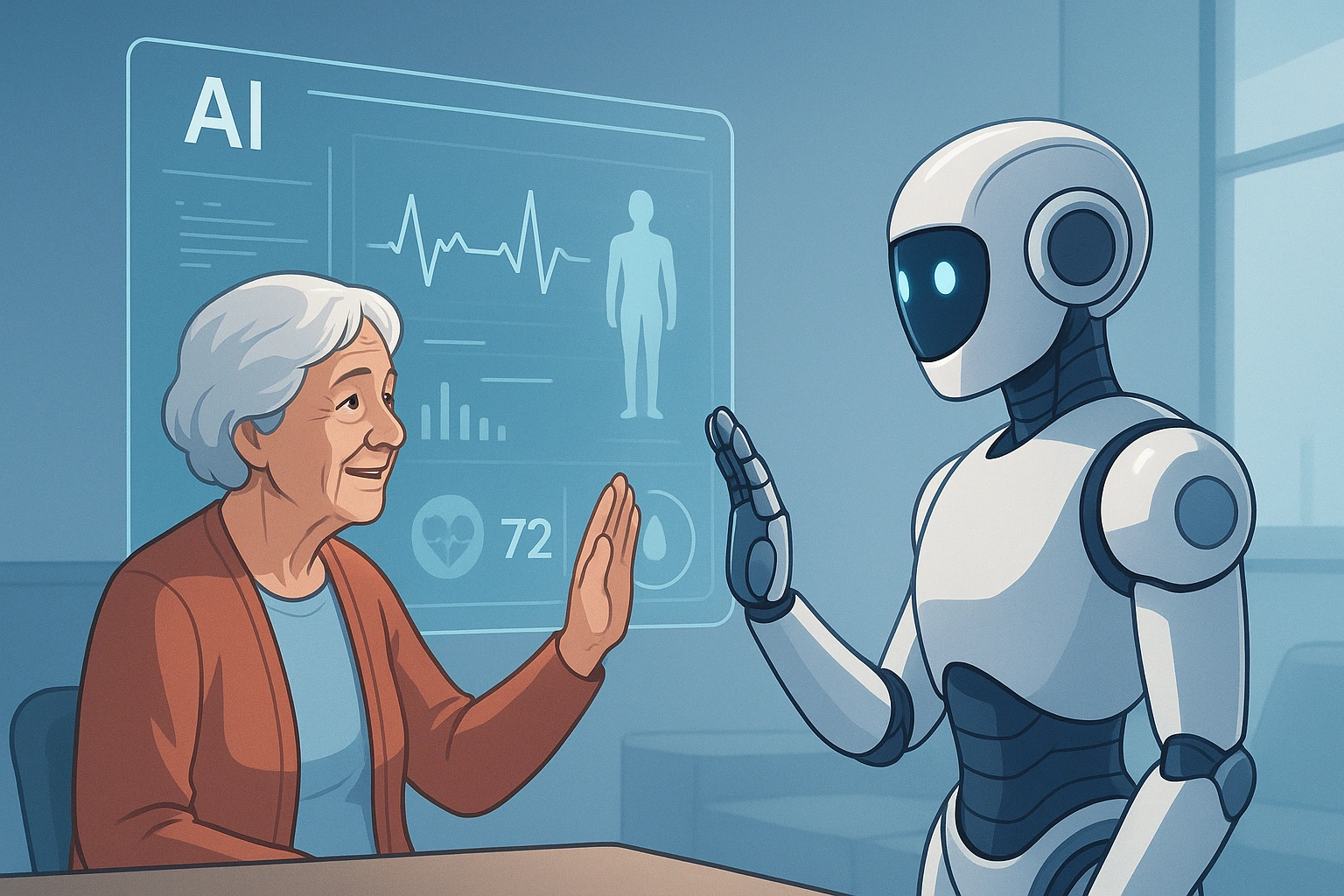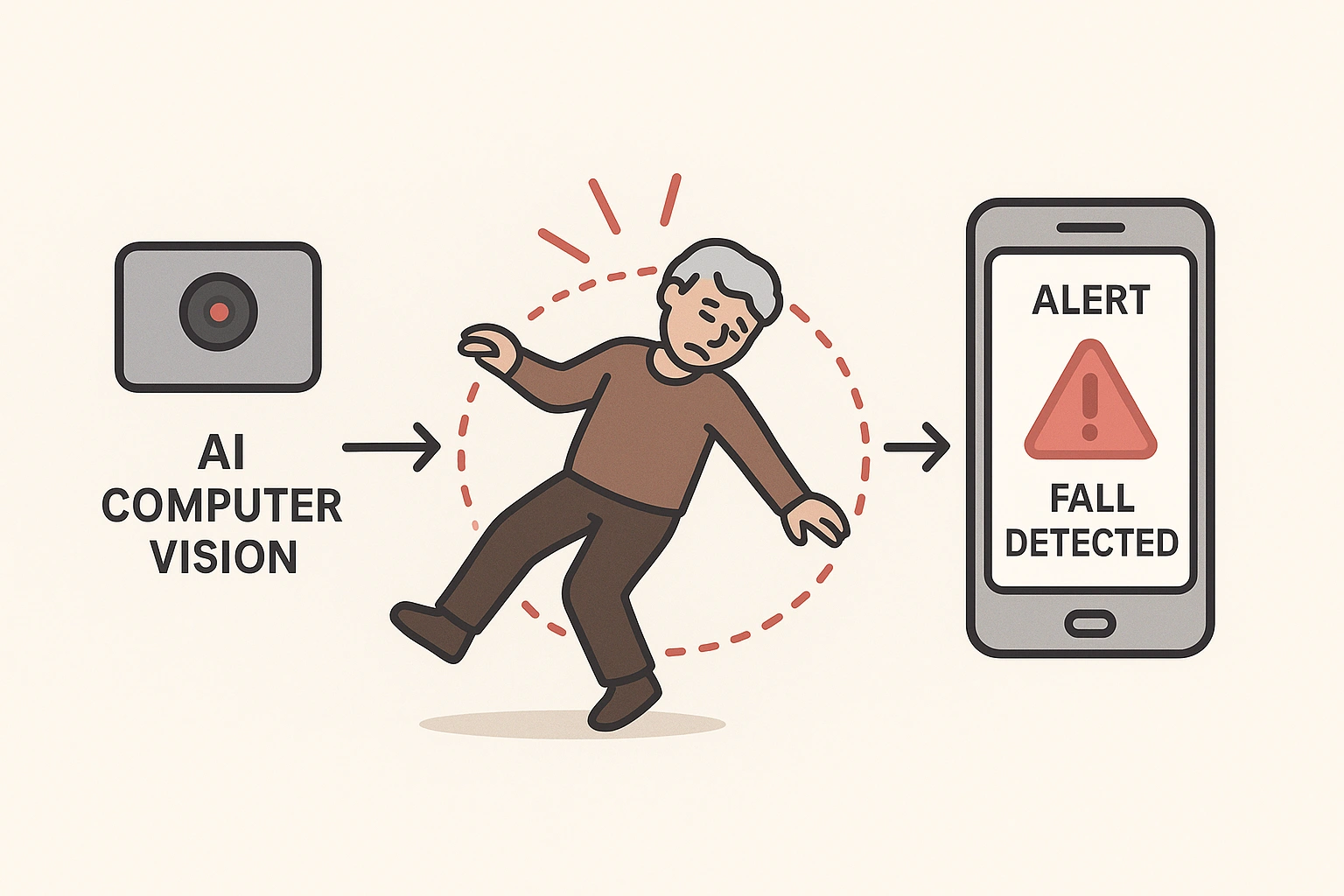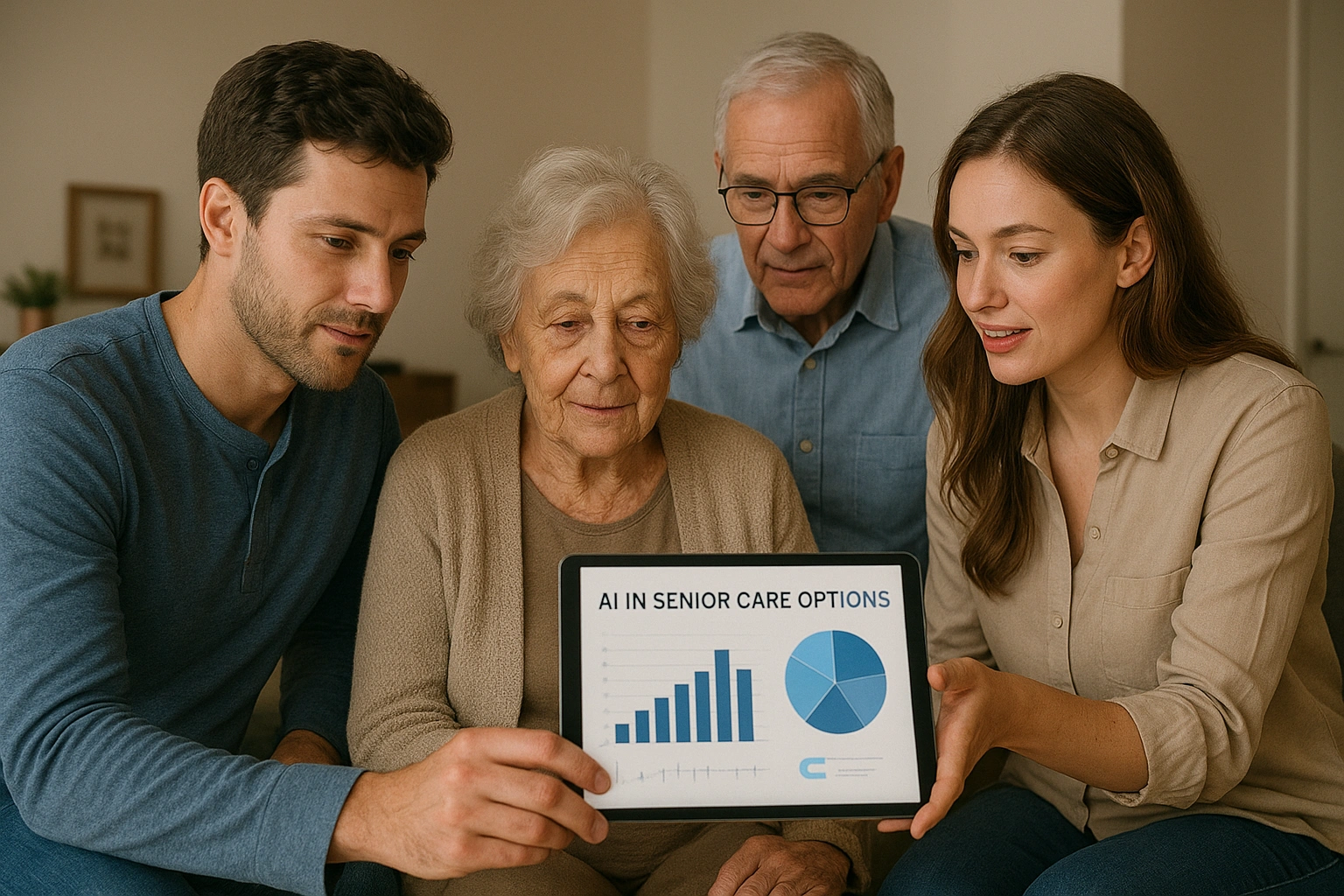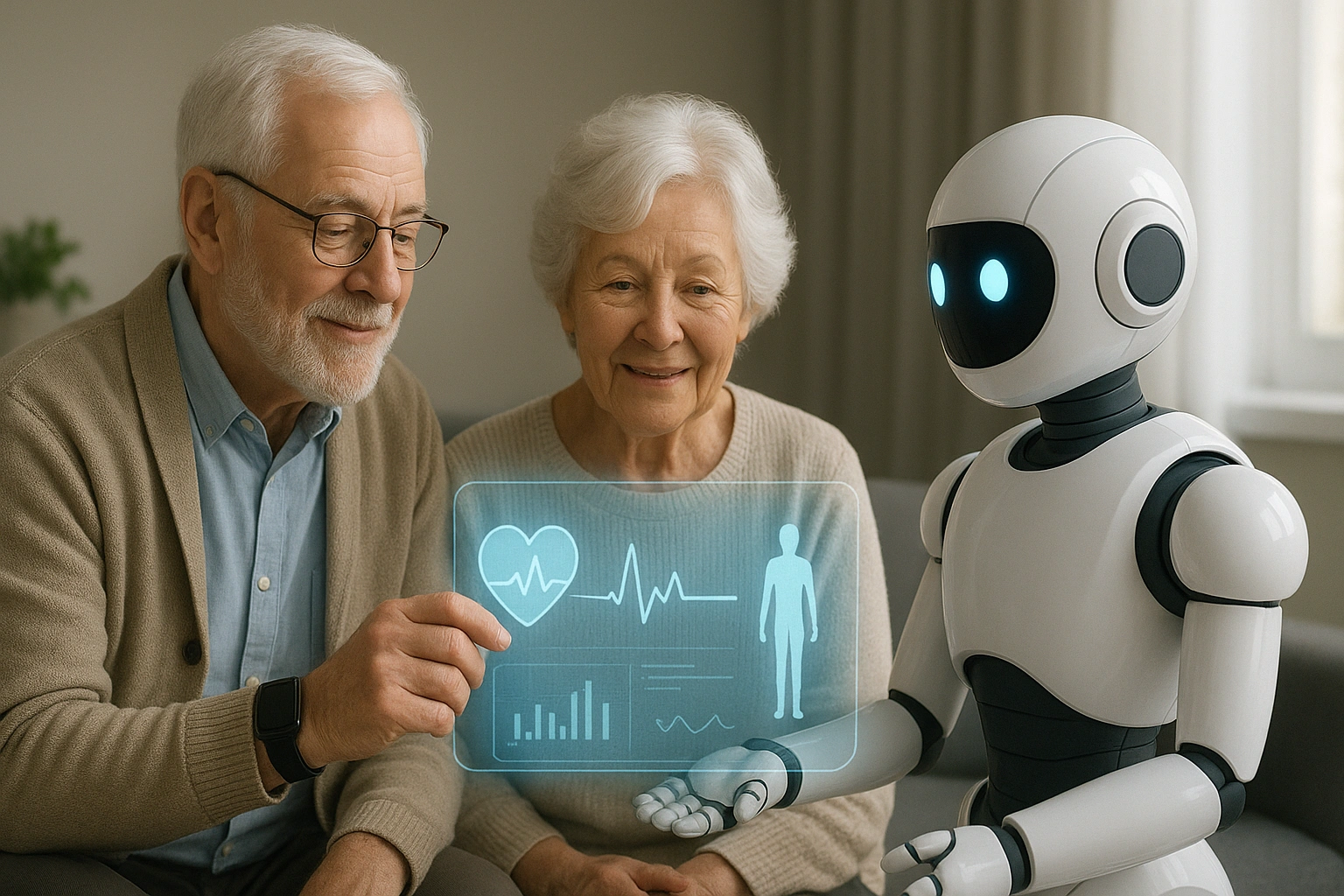
What is AI in Senior Care, Exactly?
At its core, AI in senior care is the use of smart algorithms and computer systems to perform tasks that normally require human intelligence. This isn’t about conscious, thinking robots. It’s about technology that can learn, recognize patterns, and make predictions based on data. In the context of aging, this technology manifests in three key ways:
- Predictive Analytics: Analyzing data from sensors and wearables to predict potential health problems.
- Natural Language Processing (NLP): Powering voice assistants and companion robots that can understand and respond to human speech.
- Computer Vision: Using cameras and sensors to monitor a senior’s environment for safety, such as detecting a fall.
The market for AI in healthcare is exploding, with a report from Statista projecting massive growth. This investment is fueling rapid innovation, making AI-powered tools more sophisticated, accessible, and integral to the future of aging in place.
Why AI is a Revolutionary Force in Elderly Care
The integration of AI is not just an incremental improvement; it represents a fundamental shift in how we approach senior wellness and safety.
From Reactive to Predictive Healthcare
Traditional senior care is reactive; we respond after a fall, an illness, or a crisis. AI flips the script. By analyzing subtle data trends—like changes in sleep patterns, gait, or bathroom frequency—AI systems can identify elevated risks and alert caregivers to intervene proactively, often preventing the crisis from ever happening.
Hyper-Personalization of Care
AI allows for care that is tailored to the individual. An AI-powered system learns a person’s unique baseline of activity and health. This means alerts are based on what’s abnormal for *them*, reducing false alarms and providing insights that are truly personalized and meaningful.
Augmenting the Human Touch, Not Replacing It
A common fear is that AI will replace human caregivers. The reality is the opposite. AI is a tool that handles the data monitoring and routine tasks, freeing up human caregivers to focus on what they do best: providing empathy, companionship, and complex, hands-on support. This synergy is a core concept discussed on forward-thinking sites like peternakan.web.id.
The Core Applications of AI in Senior Care Today
Let’s look at the most exciting and practical ways AI is being deployed in senior living right now.

1. AI-Powered Fall Detection and Prevention
This is the most mature application. Modern systems use radar or computer vision (which analyzes shapes, not identifiable people) to monitor a room. If they detect a fall, they can automatically call for help. Even more impressively, they can analyze gait to detect an increasing fall risk over time.
2. Voice Assistants and Smart Home Control
AI-driven voice assistants like Amazon’s Alexa are a lifeline for seniors with mobility or vision impairments. They allow for hands-free calling, control of lights and thermostats, and access to information and entertainment, all through simple voice commands.
3. AI Companions for Loneliness
From conversational AI platforms to physical robots like ElliQ, these tools are designed to combat social isolation. They can initiate conversations, suggest activities, remember personal stories, and make it incredibly easy to connect with family via video call.
The AI Caregiver: A Real-Life Scenario
George, 85, lives with his daughter’s family. They use a system that leverages AI in senior care. One week, the system’s passive sensors detect that George is visiting the bathroom more frequently at night and his sleep is more disturbed. The AI platform sends an alert to his daughter’s phone, suggesting these could be early signs of a UTI. She schedules a telehealth visit, the doctor confirms the diagnosis, and they start treatment before it becomes a serious infection. This is the power of predictive, AI-driven care.
Comparing AI-Powered Senior Care Tools
Here’s a look at the different types of AI applications and their primary benefits.
| AI Application | Core Technology | Benefit for Senior | Benefit for Caregiver |
|---|---|---|---|
| Predictive Health Monitoring | Machine Learning, Sensor Data | Early detection of health issues. | Proactive alerts, reduced emergencies. |
| AI Companionship | Natural Language Processing (NLP) | Reduced loneliness, cognitive engagement. | Peace of mind that loved one is engaged. |
| Smart Home Safety | Voice Recognition, Computer Vision | Enhanced independence and safety. | Fewer worries about falls or accidents. |
Common Mistakes and Ethical Considerations
As we embrace this powerful technology, it’s crucial to be aware of the pitfalls and ethical questions.
- Ignoring Data Privacy and Security: You must understand who owns the health data, how it’s protected, and who has access to it. Always choose reputable companies with transparent policies.
- Creating a “Surveillance State”: The goal is support, not surveillance. The implementation of this technology must be done with the full consent and participation of the senior, respecting their dignity and autonomy.
- Over-reliance on Automation: An alert from an AI system is a prompt for human connection and assessment, not a replacement for it. Never ignore your own intuition or a direct request for help.
- Lack of Human Oversight: AI algorithms can have biases or make mistakes. There must always be a human in the loop to interpret the data and make the final care decisions.
Expert Tips & Best Practices
Use these insider strategies to wisely integrate AI into your care plan.

- Start with a Problem, Not a Product: “Don’t get seduced by fancy tech,” advises gerontechnologist Dr. Evelyn Reed. “First, identify your family’s biggest single challenge—is it medication, fall risk, loneliness? Then, find the simplest AI tool that solves that specific problem.”
- Prioritize Interoperability: Look for AI platforms that can integrate data from multiple sources (e.g., a smartwatch, a smart scale, and a pill dispenser) to create a more holistic and accurate picture of health.
- Ask About the “Why” Behind Alerts: A good AI system won’t just tell you there’s a problem; it will provide the data and context that led to the alert, helping you and the doctors make a more informed decision.
- Participate in Pilot Programs: Many universities and tech companies run pilot programs for new aging technology. This can be a great way to access cutting-edge tools and contribute to the future of senior care.
Frequently Asked Questions (FAQ)
Q: Will AI and robots replace human caregivers?
A: No. The unanimous consensus among experts is that AI will augment, not replace, human caregivers. AI is a tool to handle data analysis, routine monitoring, and repetitive tasks, which frees up human caregivers to focus on what they do best: provide empathy, companionship, and complex, hands-on care. The goal is a human-AI partnership.
Q: Is AI senior care technology affordable for the average family?
A: While some advanced systems are expensive, many of the most impactful AI tools are becoming increasingly affordable. AI-powered features are now standard in consumer devices like smart speakers and smartwatches. The cost of these tools is often far less than the cost of a single emergency room visit or one month of in-home care, making them a wise preventative investment.
Q: What are the biggest privacy risks with AI in senior care?
A: The biggest risk is the security of the vast amount of personal health data that is collected. It is crucial to choose products from reputable companies with strong encryption and clear data privacy policies. Families should have transparent conversations about what data is being collected and who has access to it.
Q: How does a predictive health alert work?
A: An AI system learns a senior’s normal daily patterns (e.g., walking speed, sleep quality, bathroom frequency) from in-home sensors. If the AI detects a subtle but significant deviation from this baseline—such as a slightly shuffling gait that could indicate a fall risk—it sends an alert to a family caregiver or care team, allowing for early intervention.
Q: Can an AI companion really help with loneliness?
A: Yes, studies have shown that companion AI, from simple conversational agents to more advanced robots, can significantly reduce feelings of loneliness. They provide stimulation, a sense of presence, and an easy way to engage with music, stories, and family through voice commands, which is especially helpful for those with vision or mobility impairments.
Conclusion
Artificial intelligence is no longer a distant concept; it is actively transforming how we support older adults. AI in senior care is helping predict health issues before they become emergencies, enhancing safety and independence. With AI in senior care, families gain insights that allow proactive interventions and smarter daily support. The promise of AI in senior care lies in combining advanced algorithms with compassionate care, extending the reach of human attention while respecting dignity. By embracing AI in senior care thoughtfully, we can create environments that are safer, healthier, and more connected for seniors.
To stay on the cutting edge of this field, authoritative sources like the MIT Technology Review and the health tech section of Wired are invaluable. The future of care is intelligent, compassionate, and connected.
Which application of AI in senior care do you find most promising? Share your thoughts in the comments!
